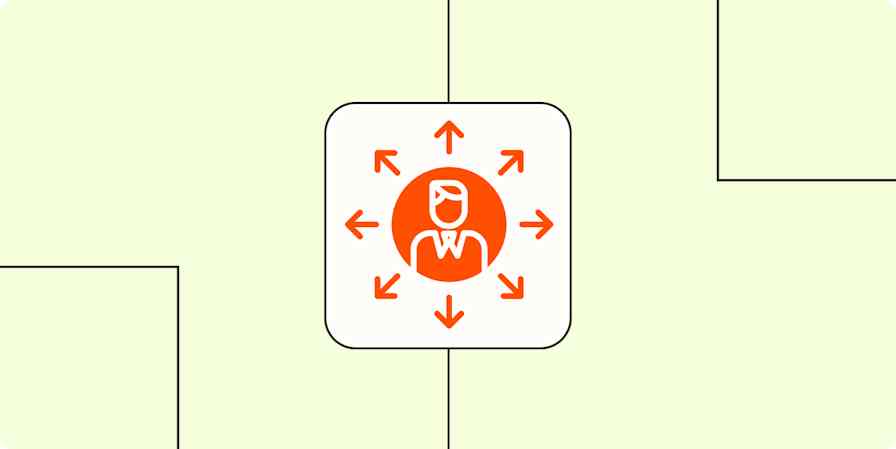How is your team doing right now? Being a leader during stressful times is something I'm having to learn firsthand as I juggle building several small businesses and producing a podcast with multiple teams.
When I interact with my own clients, one thing I always look for is how they approach wellness in the workplace, especially when things are chaotic. As a professional who regularly interacts with dozens of companies, stressed, exhausted, or overwhelmed contractors and employees are usually a pretty big red flag for me.
Whether you're a small business with a few independent contractors or leading a company of many corporate teams, it's so important to have a plan in place to prioritize mental health when everything else is in chaos.
What's your mental health workplace policy?
The pandemic gave us some great examples of what happens when companies don't have the right support systems for employees in place. High turnover, decreased productivity, and low levels of retention and employee engagement are just a few of the main side effects.
So let's start with the basics. What have you got to work with?
Refresh your memory of your company's policies by reading through the employee handbook and any internal or external materials you have available on workplace well-being. Pay special attention to any policies that have been added to or changed in the last few years. How comprehensive are they? Is it just a statement about how you support mental health in the workplace, or are there actual guidelines in place?
If your company's wellness policies are looking a little thin (or nonexistent!), this may be an opportunity to put your leadership skills to work and brainstorm some updates.
One great way to get the ideas flowing is by looking at what other companies are doing. There are a lot of standout examples out there, but I'll just share a few of my favorites:
Remote: This company has literally written the handbook on remote work. Among other things, they break down their approach to company-wide mental health days, unlimited PTO, and flexible scheduling.
Johnson & Johnson: Known for championing issues around global health and wellness, J&J's employee well-being position statement introduces the "why" behind their policies. Their "total health" approach covers programs and benefits for physical, mental, emotional, and financial needs.
Need a template? Workable's sample employer mental health policy breaks down the main elements of a company wellness policy and offers examples of actionable solutions and offerings.
Ask your team what they need
Policies are wonderful things, but they aren't always up to date, which means every once in a while, when circumstances change, you may need to fill in some policy gaps with relevant updates.
In one of my podcast episodes last year, we talked about creating a mentally healthy work culture, and one of the things that came up again and again was getting information right from the source. If you aren't sure how to fulfill employees' current wellness needs, ask them.
Now there's a pretty big caveat to this: you can't just go asking employees point-blank about their mental health. One, it's not legally your business, and mental health conditions are still often used against people in the workplace. And two, knowing that X number of your teammates deal with anxiety may be interesting, but it doesn't tell you how to meet each person's individual work needs.
Instead, frame your questions around how you can help teammates work better. Something like this:
How can we work better together?
What areas do you need the most support in right now? Include a list.
What work or mental health tools or resources would be helpful?
Are there any gaps you see in mental health support at work?
You can ask these questions via an anonymous survey to protect everyone's privacy, or simply start asking for feedback during team meetings. Personally, I'm a big believer in creating multiple safe ways for people to get in touch, especially if you're still working on establishing open communication.
What if I work for myself? Here are a few of the ways I manage my mental health and business during uncertain times: setting boundaries around my work schedule, clients, finances, and creating an emergency protocol; having a conversation with my clients about expectations around work and mental health; creating a schedule based on my energy levels to maximize productivity and minimize stress.
Take regular time off together
Stress is exhausting, so make it a point to build in time off for everyone. Here are a few ideas:
Institute mental health days
Encourage workers to take longer lunch breaks
Shorten the workweek with half-day Fridays, a four-day workweek, or a mid-week break
Experiment with flexible or hybrid work schedules
There are plenty of other types of time off to choose from as well, like Slack breaks or no-meeting weeks. Even a short breather from the sometimes overwhelming day-to-day notifications can make a difference.
Here's how a couple companies are doing this:
LinkedIn: Everyone's favorite professional social media platform has been taking time off seriously during the pandemic with a company-wide week off, seasonal half-day Fridays, and monthly "no meeting" days.
Buffer: In 2020, this marketing tech platform experimented with a 4-day work week for one month to boost well-being. Two years later, shorter weeks, or longer weeks with shorter hours, and "no meeting/no company communication Fridays" are the norm.
The key here is matching the solution to the need. Again, ask, ask, ask what people need. Whether they know it or not, everyone has an individual work style and schedule that they gravitate toward when times get tough. Some people prefer to keep their heads down and focus on work as much as possible. Others need frequent breaks. You'll have people who prefer to work from home and others who need to keep their personal and professional time separate. Personally, when I'm having a bad week or month, I work best putting in fewer hours over more days because I have limited energy and brain space each day.
But just like asking about mental health, you can't really charge in with this. How and when people get things done at work is still a pretty sensitive topic, and employees may be wary of the boss asking questions about their personal lives. Offer multiple options, ask for people's preferences, and give them the space to come to you or contact you privately.
Work smart, not hard
Nothing is more draining on bad days than repetitive, energy-sucking tasks. To take a little pressure off the human element of your team, look a little closer at the systems, tools, and processes you've got in place.
What could you improve? How can you reduce the energy needed to get stuff done? No need to go out and buy expensive new software—just consider where to plug some holes that might be wasting time and energy. Helping your team automate their busywork with a tool like Zapier can be a great step in the right direction.
Remember, it doesn't have to be perfect. My podcast co-host, Mike, talks about something called "focused imbalance," or times in our lives when we choose to embrace chaos for a little while, like pulling an all-nighter to finish a project. Sometimes, whatever works is good enough. You can always perfect the system later.
Make a backup plan for the rough days
What if there's a major world event with serious repercussions for people on your team? Or should I say, another one? This is where having a contingency plan can be a lifesaver.
First, you'll need a plan for the whole company: one that applies to everyone and covers the big-picture stuff, and one that applies to individual workers and teams.
The company plan might cover:
Resources and policies for different work types (e.g., communication if your team works from home)
How to handle or cancel high-level events like big team meetings
Security procedures for office spaces and proprietary equipment and software
Emergency preparedness and professional mental health resources
The individual plan may include:
Who works from where
Emergency contact and communication
Mental health check-ins and "buddy" systems
Backup plans for project management and submitting work
What does this actually look like for your company? As if they aren't already well-prepared, Remote's employee handbook even has an emergency guide with country-specific resources.
Have a plan for managers, too. It can be too easy to overlook your own needs, and the needs of those making the decisions, when you're leading during a crisis. Make sure to include yourself in every plan you make.
It begins with you
With pandemics, recessions, inflation, wars, and who knows what's next, supporting the well-being of a whole team can be a lot. Crisis takes a toll on everyone, which is why it's so important to start with the only person whose mental health you can actually manage: your own.
Think about how you're dealing with life right now and what you could do to improve your approach. I firmly believe that a healthy team needs a healthy leader, someone who's honest about their own needs and puts time and effort into prioritizing their own mental health as well as others.
Once you start asking yourself some of those questions, you'll begin to get a sense of how you can work well—and create a healthier workplace for your team.
Zapier is the most connected AI orchestration platform—integrating with thousands of apps from partners like Google, Salesforce, and Microsoft. Use interfaces, data tables, and logic to build secure, automated, AI-powered systems for your business-critical workflows across your organization's technology stack. Learn more.










